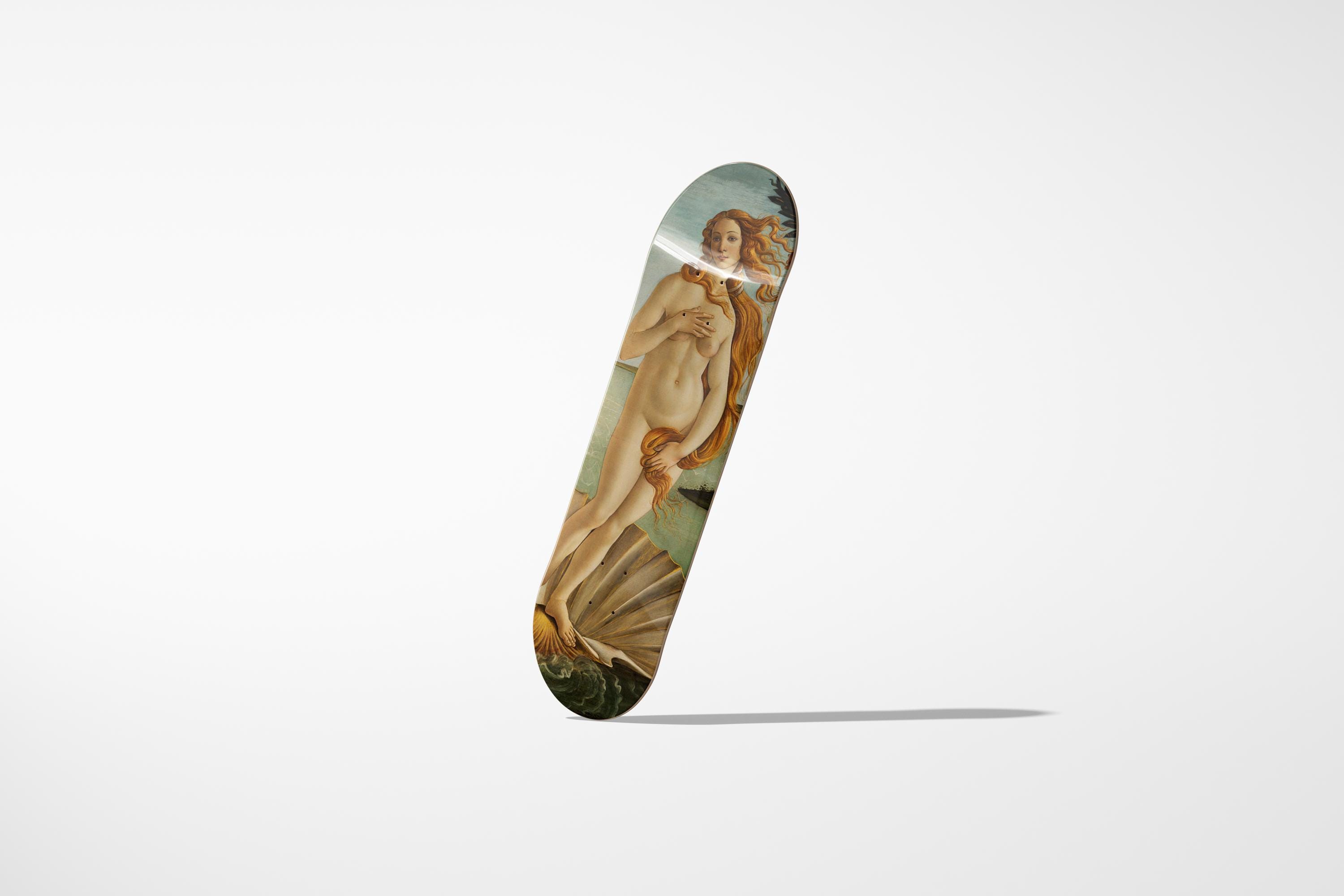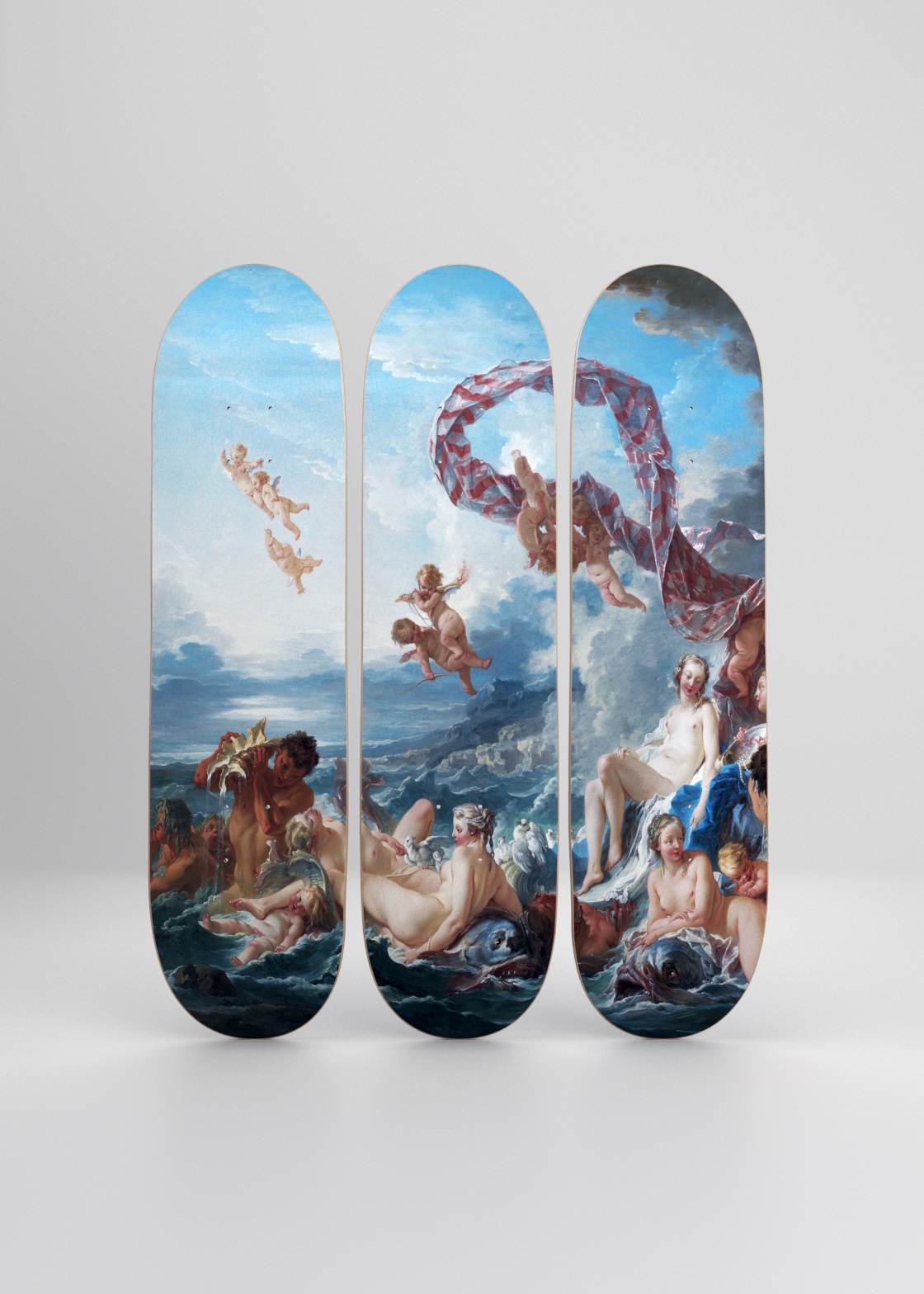You know what's funny? Last month I had a 16-year-old kid and his 45-year-old dad both staring at the same Michelangelo piece in my Berlin studio. But they were seeing completely different things. The teenager was like "Yo, this is sick on a board!" while his father was analyzing the composition and historical significance. That moment made me realize something crucial - skateboard art isn't just about age, it's about how different generations connect with visual culture.
After 4 years of curating Renaissance skateboard art for DeckArts, I've learned that age definitely influences taste, but not in the way most people think. Actually... let me tell you what I've discovered about creating art that speaks to everyone from rebellious teens to sophisticated collectors.
Understanding Generational Art Preferences

From my Red Bull Ukraine days organizing events, I noticed this pattern - different age groups gravitate toward different visual elements, but they all respond to authenticity. Teens want something that feels rebellious and unique. Young adults (20s-30s) are looking for pieces that express their identity and values. And older collectors? They appreciate craftsmanship, history, and investment potential.
But here's the thing - Renaissance art actually hits all these notes. It was rebellious for its time (seriously, painting nude figures was pretty radical in the 1400s). It's historically significant. And the craftsmanship? Unmatched.
I mean, when you think about it... these artists were basically the original disruptors.
Teens (13-19): Rebellion Meets Renaissance

Teenagers are naturally drawn to anything that feels authentic and anti-establishment. And honestly? Renaissance artists were the original rebels. They challenged religious authority, painted controversial subjects, and revolutionized artistic techniques.
When I'm working with teenage clients (or their parents), I focus on pieces that have this edge:
What works for teens:
- Bold, dramatic compositions (think Caravaggio's intense lighting)
- Pieces with hidden meanings or controversial backstories
- Art that feels "discovered" rather than mainstream
- Vibrant colors that pop in their rooms
- Subjects that challenge authority or tradition
The key is storytelling. Teens don't just want pretty pictures - they want pieces with attitude. When I tell them that Botticelli's Birth of Venus was considered scandalous, or that Da Vinci was basically a Renaissance hacker experimenting with everything from flying machines to human anatomy... suddenly these "old" artworks become cool.
Actually, that's exactly why our DeckArts collection works so well for younger collectors - we're not just selling pretty pictures, we're selling rebellion with cultural significance.
Best positioning for teen spaces:
- Above desks for inspiration during study
- Bedroom walls where friends will see them
- Areas with good lighting for social media photos
- Spaces that feel personally curated, not parent-chosen
Young Adults (20-35): Identity and Aspiration
This is actually my core demographic, and I get it completely. When you're building your first real apartment, starting your career, figuring out who you are... your art choices matter. They're statements about your values, education, taste level.
Young adults want pieces that:
- Show cultural sophistication without being pretentious
- Work in small urban apartments (like my Berlin place)
- Start conversations with dates and friends
- Represent good value (not cheap, but worth the investment)
- Bridge their past interests with their future aspirations
This age group loves the story behind DeckArts - taking something associated with youth culture (skateboarding) and elevating it with classical art. It's exactly how they see themselves: honoring their roots while growing intellectually.
You know, I wrote about this exact challenge in my Small Spaces, Big Impact: Skateboard Decor for Urban Apartments piece. Young adults need pieces that work in 400-square-foot spaces but still command respect.
Perfect for young adult spaces:
- Living room focal walls for entertaining
- Home office backgrounds for video calls
- Entryways that make strong first impressions
- Bedroom walls that feel sophisticated, not juvenile
Adults (35-50): Established Taste and Investment

This group knows what they like, and they have the budget to get it. They're not buying art to figure out their identity - they're buying pieces that reflect who they've become. From my experience with collectors in this age range, they want quality, authenticity, and pieces that will appreciate over time.
Adults in their 30s and 40s appreciate:
- Historical significance and educational value
- Museum-quality reproduction techniques
- Pieces that complement established interior design
- Art that works for family-friendly spaces
- Investment potential and collectibility
They're also the group most likely to buy multiple pieces for seasonal rotation. Actually, I should mention... this is where the investment angle really kicks in. I explored this topic extensively in my The Investment Potential of Skateboard Art: Building a Valuable Collection analysis.
For established adults, I recommend:
- Gallery wall arrangements of 3-5 related pieces
- Pieces with detailed historical provenance
- Classic compositions that age well with changing decor
- Works that children can appreciate as they grow
Mature Collectors (50+): Legacy and Craftsmanship
The most sophisticated collectors I work with are often 50+. They've seen trends come and go, and they know the difference between fad and lasting quality. This group values craftsmanship above everything else.
What mature collectors look for:
- Exceptional printing quality and color accuracy
- Pieces with clear investment potential
- Art that tells a story about their discernment
- Works that can be passed down to children
- Unique items not available everywhere
They're also the most likely to understand the technical aspects of Renaissance art - the sfumato technique, the mathematical precision of compositions, the historical context. When I explain how we achieve museum-quality color matching, or discuss the symbolism in a particular piece, these collectors really get it.
And honestly, they appreciate the craftsmanship that goes into our professional quality pieces more than any other demographic. They understand why we invest in premium printing techniques rather than cutting corners.
Cross-Generational Appeal: What Works for Everyone
Here's something I've learned - certain pieces transcend age completely. The Mona Lisa, for instance, works for teenagers (mysterious, iconic), young adults (sophisticated, conversation-starting), established adults (classic, valuable), and mature collectors (historically significant, expertly crafted).
Universal appeal factors:
- Iconic recognition value
- Technical excellence that's obvious even to non-experts
- Stories that resonate across generations
- Compositions that work in various interior styles
- Colors that complement different design preferences
The best DeckArts pieces hit multiple age demographics simultaneously. That's actually one of our competitive advantages - while other skateboard art companies focus on youth markets, we create pieces that parents and kids can appreciate together.
Age-Appropriate Presentation Tips
For younger collectors (teens/young adults):
- Emphasize the rebellious history of the art
- Show how pieces photograph well for social media
- Discuss the uniqueness factor ("no one else has this")
- Focus on personal expression and identity
For established collectors (35+):
- Lead with quality and craftsmanship details
- Discuss investment potential and rarity
- Explain historical significance and context
- Show how pieces complement existing collections
For mature collectors (50+):
- Emphasize technical excellence and museum-quality standards
- Provide detailed provenance and historical context
- Discuss long-term value and legacy potential
- Show expert-level details that demonstrate sophistication
The Psychology Behind Age-Based Preferences
From my graphic design background, I understand that age affects how we process visual information. Younger eyes gravitate toward high contrast and bold colors. As we age, we often prefer more subtle variations and complex compositions.
But Renaissance art is genius because it works on both levels. Da Vinci's compositions have bold, immediately recognizable elements (perfect for younger viewers) AND incredibly subtle details that reward careful study (perfect for mature viewers).
This is why I always recommend starting with a few key pieces rather than trying to appeal to every possible taste. Better to have 2-3 really strong works that speak to multiple generations than 10 pieces that only appeal to narrow demographics.
I mean, that's exactly the philosophy behind... actually, let me mention this article I wrote about The Rise of Skateboard Art in Luxury Homes: A Cultural Shift - it covers how different generations are embracing this art form.
Building Collections That Grow With You
Here's something most people don't think about - your art collection should evolve as you do. The piece you love at 20 might feel different at 40. That's not a bug, it's a feature.
The beauty of Renaissance skateboard art is its depth. A teenager might initially love a Botticelli for its boldness and beauty. Ten years later, they might appreciate the mathematical precision of the composition. Twenty years later, they're analyzing the historical context and symbolic meaning.
Good art grows with you. That's exactly why I focus on professional quality rather than trendy designs that might feel dated in a few years.
About the Author
Stanislav Arnautov is the founder of DeckArts and a creative director originally from Ukraine, now based in Berlin. With extensive experience in branding, merchandise design, and vector graphics, Stanislav has worked with Ukrainian streetwear brands and organized art events for Red Bull Ukraine. His unique expertise combines classical art knowledge with modern design sensibilities, creating museum-quality skateboard art that bridges Renaissance masterpieces with contemporary culture. Follow him on Instagram, visit his personal website stasarnautov.com, or check out DeckArts on Instagram and explore the curated collection at DeckArts.com.

